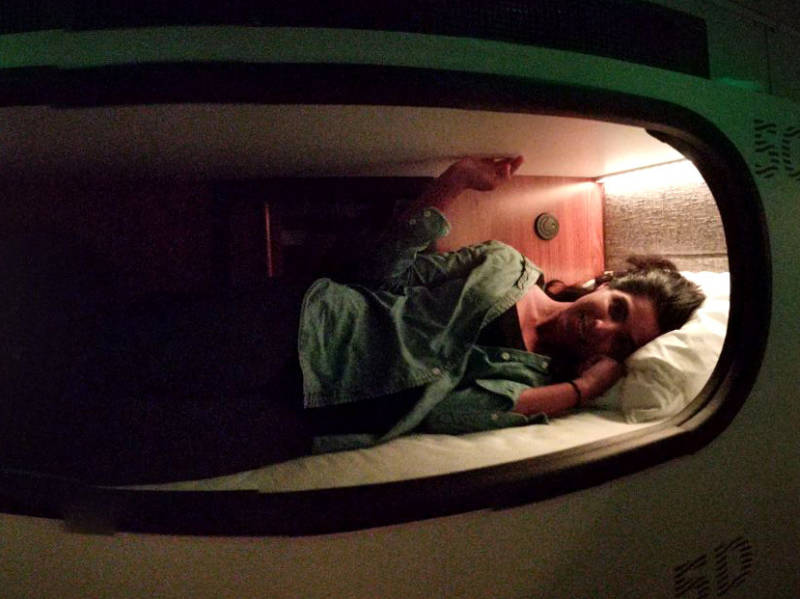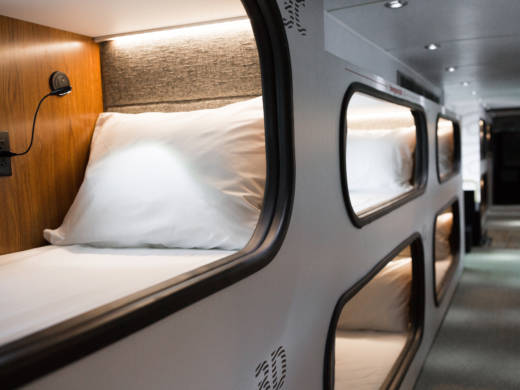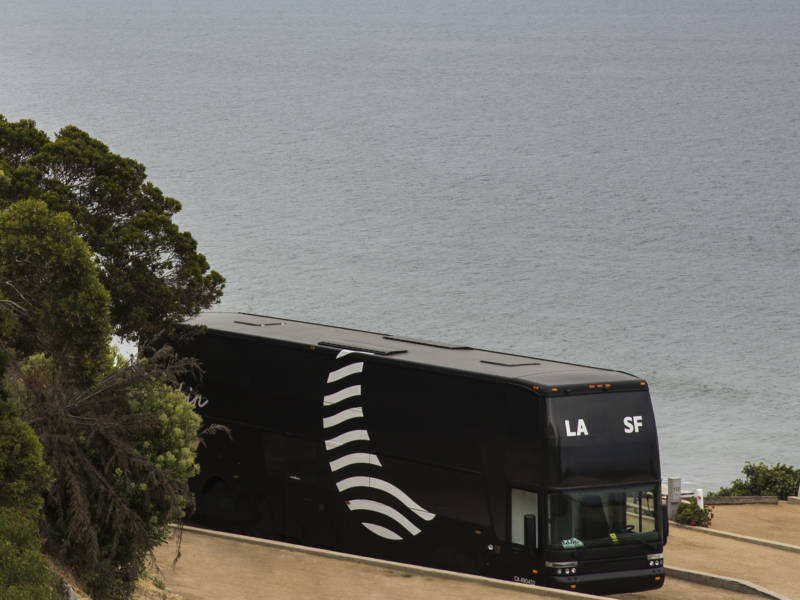If you ever have to travel a long distance — say, Washington, D.C., to Atlanta, Detroit to Chicago, San Francisco to Los Angeles — you might be stuck with only bad options: a flight from an airport with chronic delays that's hard to get to, or an Amtrak train ride that costs three times as much as a flight.
Well, now there's a new option on the horizon: a double-decker bus with pods for sleeping. It's called, simply, Cabin. It's an overnight service — like a red-eye — designed for people who love going places, but hate being in transit.
Last weekend, I gave it a try. My goal was to spend all day Sunday enjoying beautiful, warm, sunny Southern California, then get to work in Northern California by 8 a.m. Monday — feeling well rested, not a train wreck.
Part one went smoothly: I had a bike ride along the beach with a buddy, a hearty Persian dinner, and even caught that new movie Dunkirk (not for the faint of heart).
Part 2 starts at 11 p.m., when I board my Cabin in Santa Monica. The ground floor has table seating, kind of like the dining car in a train. The upper level, however, is like nothing I've ever seen before. On each side of the walkway, there are beds — several across, and stacked in two like bunk beds, only built into the bus.

They're called pods, and crawling into one is jarring. It's not high enough to sit up in, so you have to crawl. And once inside, it feels like being in a cabinet or a coffin (you pick). I inch my way into a top pod, trying not to make noise because a mother and her little girl are sharing the pod below me. Note: Only petite people can share.


9(MDAxOTAwOTE4MDEyMTkxMDAzNjczZDljZA004))
